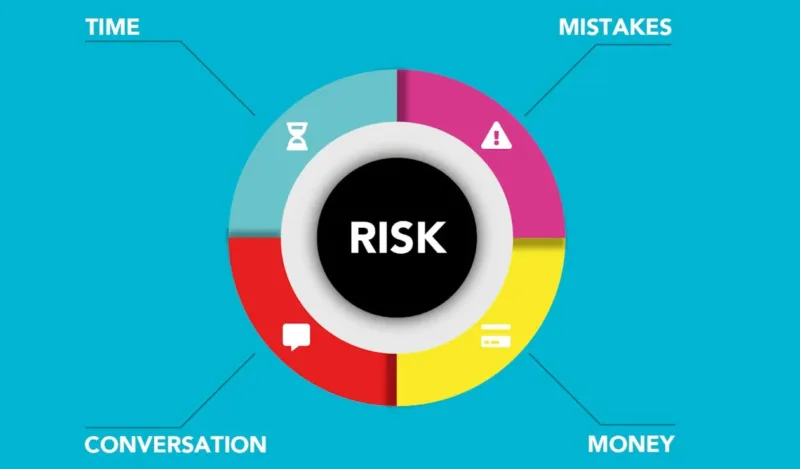Investing student loans might seem appealing, especially when you’re just starting and eager to make your money work harder for you. You might think, “Is it possible to turn that borrowed cash into profitable investments?” Yes, it is possible, but it’s fraught with risks and legal considerations that you must understand fully before diving in.
The idea of compounding interest from investments while still in school sounds appealing. Yet, investing money in your education can have hefty consequences if handled incorrectly. The stakes are high, from potential penalties to the risk of losing your investment altogether. Consider whether the returns from potential investments surpass the interest accumulating on your loans.
Imagine this: You decide to invest part of your student loan in a hot new stock, but then the market takes a downturn and your investment plummets. Now, not only do you owe the original loan amount plus interest, but you’ve also lost your investment. The legal and ethical implications of using your student loan money this way can’t be ignored either.

When considering using your student loans for investing, it’s crucial to grasp the fundamentals. At its core, investing involves putting your money into assets with the potential for growth, such as stocks, bonds, or real estate. This can sound appealing, especially with the lure of compound interest, but there’s a need for a balanced approach.
Interest Rates play a significant role. Federal student loans generally have fixed interest rates, which can vary year by year. For the 2023-2024 school year, undergraduates face a rate of 5.50%. Knowing your loan’s interest rate helps compare potential returns from investments versus the cost of borrowing.
Let’s talk risk. Investing always comes with a degree of uncertainty. Stock markets fluctuate, and while you might see significant gains, there’s also the possibility of losses. Balancing this risk against your loan interest is essential. For instance, consider if your investment’s expected return outweighs the stability of simply paying down your debt.
Cash flow is another key point. When investing your loan funds, you must manage the possible cash flow implications. Investments may not always be liquid, meaning you can’t access your money quickly if needed. This can be a problem when it’s time to make loan payments.
A key question is: Is the return on investment (ROI) worth it? It might make sense if your investments, after taxes and fees, yield a higher rate than your loan’s interest rate. However, this isn’t guaranteed, and you must be prepared for variable outcomes.
Remember, legality and ethics are non-negotiable. Using loans intended for investment education can sometimes breach loan agreements or policies. It’s wise to consult a financial advisor to navigate these waters safely.
Investing loan money can be strategic yet tricky. Compound interest is your friend here, allowing your investments to grow over time—but only if managed prudently. Evaluate all aspects before diving in, and ensure you’re not risking more than you can afford to lose.

Investing your student loan money requires a cautious approach. It is crucial to assess the risks and understand your overall financial health.
First, consider your debt levels. If you already have substantial student loan debt, adding investment risk might increase your financial stress. The burden of loan repayments, with typical interest rates ranging from 4% to 7%, can feel overwhelming.
Examine your debt-to-income ratio. A high ratio indicates that a significant portion of your income goes towards debt repayment, leaving less room for investments. Aim for a lower ratio to maintain financial stability.
Budgeting is essential. Create a clear, realistic budget that covers your educational expenses, living costs, and other essentials. Allocate a portion of your loan to build an emergency fund before considering investments. An emergency fund can prevent you from falling into deeper financial trouble.
When investing, prioritize low-risk options. You might consider savings accounts, government bonds, or index funds. These options are generally more stable and can help you grow wealth without exposing you to substantial loss.
Your financial goals matter, too. Are you looking to save for the long term, or do you need funds for short-term expenses? Align your investment strategy with your goals and financial situation.
Consulting a financial advisor can provide personalized guidance based on your unique circumstances. They can help you weigh the benefits and drawbacks of different investment options, ensuring you make informed decisions.
In the end, maintaining financial health while managing investments is about balance. Evaluate risks, stay informed, and never invest money you can’t afford to lose.
See Related: Debunking Business Loan Myths: What Instagram Gurus Aren’t Telling You

Investing your student loans might not be explicitly illegal, but it’s a legal gray area. Government-subsidized loans come with specific conditions, and diverging from these can result in complications.
Borrowers of subsidized loans may face legal action if they’re found to misuse funds. The Department of Education expects these loans to go towards educational expenses.
There’s also an ethical dimension to consider. Using student loan money for investments can feel like a gamble with public funds. Public service loan forgiveness and income-driven repayment plans exist to help borrowers manage their debt responsibly.
Ethical concerns arise in thinking about fairness. When you invest loan money, you might gain an edge over other students who use their loans as intended. This can lead to questions about equity.
On the other hand, some might argue that investing could potentially ease your financial burden. If successful, it can help repay your loans faster, potentially reducing the need for student loan forgiveness programs.
Loan forgiveness and tax deductions also play a role. If you’re planning on sticking around for public service loan forgiveness, investing those funds might seem risky. You’re betting on the market rather than a structured repayment plan.
Reflect on the intent behind these loans. They’re designed to support your education, not necessarily to serve as seed money for investments.
Ultimately, the legal and ethical landscape surrounding this topic is murky. Make sure to weigh both the potential benefits and the associated risks carefully.

Navigating the world of investments can be a bit like navigating uncertain terrain. Given that you might still be dealing with student loans, the need to be cautious and analytical becomes even more critical. Here are some strategies to help you start on the right foot.
Start Early
Time is one of the most powerful tools in investing. The earlier you begin, the more your investments can benefit from the magic of compounding. Even if you start with small amounts, they can grow significantly over time.
401(k) and Employer Match
If your employer offers a 401(k) plan, contribute. Particularly if there’s a matching program, this is essentially free money. Imagine someone saying, “For every $1 you save, I’ll give you another $1.” You’d take that deal, right?
Roth IRA
Consider opening a Roth IRA. While contributions are made with after-tax dollars, retirement withdrawal is tax-free. This can be a great way to maximize your rate of return without worrying about future tax implications.
Dollar-Cost Averaging
This strategy involves regularly investing a fixed amount of money, regardless of the stock market’s condition. It helps mitigate the emotional rollercoaster of market highs and lows. For instance, you could invest $100 every month in an S&P 500 index fund.
Index Funds and ETFs
Lower your risk by investing in index funds or ETFs, which track broader stock market indexes. This diversified approach reduces risk compared to picking individual stocks and can yield consistent investment returns.
Emergency Fund
Before diving deep into investing, ensure you have an emergency fund. Aim for at least three to six months’ worth of expenses. This will act as a safety net, ensuring that you won’t need to dip into your investments in case of unexpected costs.
Debt Management
Continue to make regular payments on your student loans. Refinancing your loan can save you thousands in interest over the life of the loan. Balancing debt repayment with investing is crucial to ensure you don’t overextend yourself financially.
Following these strategies will create a solid foundation for your financial future. Remember, investing is a marathon, not a sprint. Make informed, cautious decisions to secure your financial well-being.
See Related: Turning Financial Mistakes into Profitable Lessons: How Recovering from a Bad Car Loan Led to Financial Literacy

Aaron’s Financial Journey
Aaron, a recent graduate, faced a dilemma. Should he pay off his student loans first or invest his limited funds? He analyzed his options using a student loan calculator, considering factors like interest rates and projected investment returns. At 25, Aaron knew his credit score would impact his loan terms and investment potential. Aaron made an informed decision by comparing the 6% average return of the S&P 500 to his loan’s 5% interest rate.
International Perspective
Investment practices and student loans vary globally. For instance, a study highlighted that only 54% of raw case users came from the U.S., showing diverse approaches to financial planning. This diversity in financial strategies often involves differing market conditions and loan structures. By understanding global trends, you broaden your financial strategy toolkit.
Balancing Repayment and Investment
Imagine you’re juggling high-interest student loans (some as high as 14.24%) and the potential gains from investments. One savvy approach is splitting your funds: allocating part to paying down high-interest debt while investing the rest in low-risk opportunities. This method offers a balanced path to financial stability without compromising growth.
Impact of Age and Risk
Your age significantly influences risk tolerance. Younger investors, like those in their 20s, often opt for higher-risk investments, banking on investment returns over time. Contrastingly, older investors nearing retirement might focus on stable, low-risk options. Striking the right balance tailored to your age and financial goals is crucial.
Ethical and Legal Considerations
It’s essential to be aware of the legal and ethical implications when diverting funds from student loan repayments to investments. Mismanaging this balance can affect your financial health and creditworthiness. Always stay informed about your legal responsibilities and the ethical ramifications of your financial decisions.

Finding alternative ways to fund your ventures can be crucial when you’re looking to invest but are burdened by student loans. Let’s break down some opportunities.
Refinancing Student Loans
Refinancing federal or private student loans can lower your interest rates. This can free up discretionary income, giving you more room to invest. However, be cautious, as refinancing federal loans means losing out on benefits like Public Service Loan Forgiveness (PSLF).
Using Discretionary Income
Mapping out your budget to see where to cut corners might reveal extra cash for investments. Even small amounts can grow significantly over time if invested wisely. For instance, skipping that daily coffee run could be a healthy investment sum by the year’s end.
Peer-to-Peer Lending
Peer-to-peer lending platforms allow you to borrow directly from individuals rather than financial institutions. This could offer lower interest rates compared to high-interest student loans. Always scrutinize the terms, though, as these loans can sometimes carry hidden risks.
Crowdfunding
Sites like GoFundMe or Kickstarter might help you gather funds for specific investment projects. Although unconventional, tapping into your network might just give you the financial boost you need.
Side Hustles
Taking on a part-time job or gig work such as freelancing or ride-sharing can bring in extra income. This cash can then be funneled directly into your investment portfolio. It’s an effective but time-consuming way to generate funds.
Selling Assets
Do you have items lying around that you no longer need? Selling off unused assets—such as electronics, furniture, or even an old car — can be a quick way to gather investment capital.
Exploring these alternative funding methods can make your investment goals more achievable, even with existing student debt. Always weigh the benefits against the risks to make the most informed decision possible.
See Related: Maximizing Small Investments: A Guide for Young Investors with $5k or Less

When considering the intersection of paying off student loans and investing, you have to look at financial planning and long-term goals. Balancing monthly payments on student loans with investing for retirement can be tricky.
First, assess your current situation. If your student loan interest rate is high, it might make sense to prioritize repayment. This will reduce the total interest payments over time. Conversely, investing might yield higher returns if the interest rate is low.
Federal student loan repayment programs offer various plans that could lower your monthly payment. Income-driven plans can be particularly helpful if money is tight. Opting for minimum payments can free up cash for your retirement plan.
Speaking of retirement, the earlier you start saving, the better. Thanks to compound interest, even small, consistent contributions to a 401(k) or IRA can grow significantly over time. Creating a retirement plan and sticking to it is crucial.
When deciding where to allocate extra funds, it’s essential to consider your debt-free goals. Paying off loans can provide psychological and financial freedom. However, missing out on years of investment returns could set back your goal of wealth accumulation.
A balanced approach might be the best course of action. For instance, you could put some extra funds toward loan repayment and the rest into investments. This way, you’ll chip away at debt while still making progress toward building wealth and securing your future.
Ultimately, it’s about understanding your personal financial goals and choosing the strategy that best aligns with them. Evaluate the trade-offs carefully, and don’t hesitate to seek advice from financial advisors if needed.
Last updated: August 5, 2024